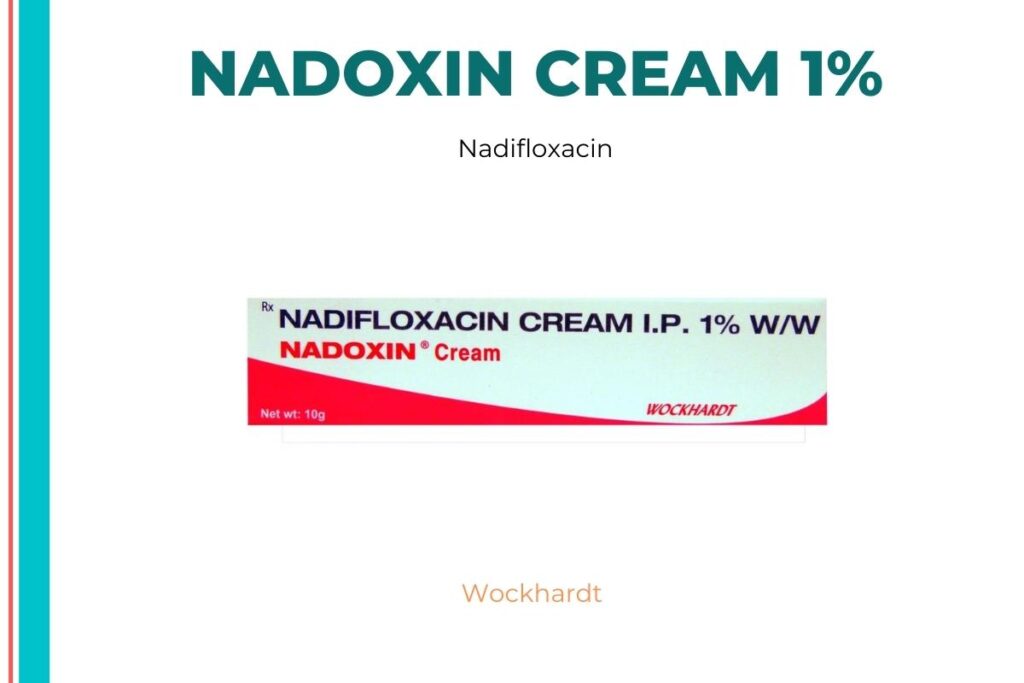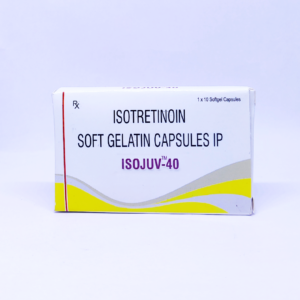Nadoxin Cream 10 gm
Fluoroquinolone antibiotics, such as Nadoxin Cream 10 gm, are generally used to treat topical infections caused by bacteria, such as skin infections and acne vulgaris. A bacterial infection is an infection caused by bacteria that develops in the body. It can target any portion of the body and multiply swiftly.
Nadoxin Cream 10 gm is a topical antibacterial cream that helps cure and prevent a variety of skin bacterial infections. It acts by killing bacteria that cause infections and is bactericidal. It stops germs from fixing themselves and kills them, stopping the infection from spreading further. Nadoxin Cream 10 gm is a broad-spectrum antibiotic that kills most Gram-negative bacteria, as well as many Gram-positive bacteria and some anaerobes (that lives without oxygen).
Nadoxin Cream 10 gm should be used according to your doctor’s instructions for dosage and duration. In some situations, you may have application site reactions such as a burning sensation, irritation, or rashes. The majority of these Nadoxin Cream 10 gm side effects do not require medical care and will go away over time. However, if the negative effects do not go away, consult your doctor.
If you are allergic to nadifloxacin or any of the chemicals in Nadoxin Cream 10 gm, tell your doctor. Nadoxin Cream 10 gm should not be applied to broken skin, and it should not come into contact with your eyes, nose, or mouth. Unless ordered by a doctor, do not cover the infected region with airtight dressings such as bandages, since this may raise the chance of adverse effects. If you’re breastfeeding, make sure you cleanse the area thoroughly before feeding your baby, as Nadoxin Cream 10 gm might be dangerous if consumed with milk.
Bacterial Infections Uses of Nadoxin Cream 10 gm

Medicinal Advantages
Nadoxin Cream 10 gm contains the antibiotic Nadifloxacin, which treats and prevents bacterial skin infections caused by most Gram-negative bacteria, many Gram-positive bacteria, and some anaerobes bacteria (those that do not live in the presence of oxygen), such as Cutibacterium acnes and Staphylococcus epidermidis. It is bactericidal in nature and kills bacteria that cause diseases by preventing the production of their cell wall, which is necessary for survival. It also prevents bacterial cells from repairing themselves. It kills the germs in its entirety. The advantage of Nadoxin Cream 10 gm is that it penetrates most deep tissues well. As a result, it’s utilized to treat bacterial skin infections.
Nadoxin Cream Instructions for Use 10 gm should be used at the dose and for the duration recommended by your doctor.
Store in a cool, dry location away from direct sunlight.
Nadoxin Cream 10 gm Side Effects
Nadoxin Cream 10 gm, like all drugs, can produce side effects, though not everyone experiences them. In some situations, you may have application site reactions such as a burning sensation, irritation, or rashes. The majority of these Nadoxin Cream 10 gm side effects do not require medical care and will go away over time. However, if the negative effects do not go away, consult your doctor.
Drug Recommendations
If you are allergic to nadifloxacin or any other quinolone or fluoroquinolone antibiotic, such as delafloxacin, levofloxacin, moxifloxacin, or ciprofloxacin, or if you have had a severe response to nadifloxacin, do not use it. Additionally, when taking Nadifloxacin, exposure to sunlight should be avoided because it may induce increased phototoxicity or photosensitivity. Nadifloxacin should not be used on broken skin or in the eyes, nose, or mouth. Unless recommended by a doctor, the infected region should not be covered with airtight coverings such as bandages, as this may raise the chance of side effects.
Interactions Between Drugs
There were no drug-drug interactions observed.
No drug-food interactions have been discovered.
No drug-disease interactions have been discovered.
Safety Suggestions
ALCOHOL
There is no evidence of interaction. Please seek medical advice if you experience any discomfort.
PREGNANCY
There is no evidence of interaction. Please seek medical advice if you experience any discomfort.
BREAST FEEDING
If you’re breastfeeding, make sure Nadifloxacin isn’t being used or if it has been used previously. Before feeding your baby, thoroughly wash the nipple area and breast area, as this might be hazardous to the baby if consumed with milk.
DRIVING
There is no evidence of interaction. Please seek medical advice if you experience any discomfort.
LIVER
There is no evidence of interaction. Please seek medical advice if you experience any discomfort.
KIDNEY
There is no evidence of interaction. Please seek medical advice if you experience any discomfort.
No habit formation
Advice on Diet and Lifestyle
After finishing the full course of Nadifloxacin, probiotics should be used to replace any good bacteria that may have been killed in the intestines. Antibiotic-associated diarrhea can be reduced by taking probiotics following antibiotic treatment. Fermented foods including yoghurt, cheese, sauerkraut, kombucha, and kimchi can aid in the restoration of healthy bacteria in the intestine.
Include more fiber-rich foods in your diet because they are easier for your gut bacteria to digest, which aids in their growth. As a result, fiber-rich diets may aid in the restoration of healthy gut bacteria following antibiotic treatment. Include entire grains in your diet, such as whole-grain bread and brown rice. While taking Nadifloxacin, make sure you drink plenty of water or other fluids every day.
Keep the affected region clean and maintain adequate hygiene.
Additional Information : This item is non-refundable
Concerns of Patients
Bacterial infection: A bacterial infection occurs when harmful bacteria infiltrate our bodies, grow, and infect us. It can target any portion of the body and multiply swiftly. When bacteria infects you, you may develop nonspecific symptoms such as fevers, chills, and exhaustion. Bacteria come in a variety of shapes, the most common of which are spherical, rod-shaped, and spiral-shaped. Bacterial infections range from simple ailments such as sore throats and ear infections to serious infections such as meningitis and encephalitis. Streptococcus, Staphylococcus, and E. coli are some of the bacteria that cause infections. A bacterial illness can affect anyone at any time. People with weakened immune systems or those who take immunosuppressive medications are more susceptible to bacterial infection.
FAQs
Photosensitivity is a side effect of nadifloxacin, which makes your skin more sensitive to sunlight. As a result, extended sun or UV light exposure should be avoided. Always put on sunscreen before going out in case of an emergency.
Nadifloxacin should be taken according to the doctor’s instructions for dosage and duration. It’s possible that applying more than the suggested dose will result in undesirable side effects. Please see your doctor if your symptoms do not seem to be better.
To avoid a recurrence of infection, do not stop taking nadifloxacin even if your bacterial illness is under control. Even if it feels better, it should be used for at least two days.
Impetigo (red sores on the face), secondary infected wounds, folliculitis (swollen hair follicles), sycosis vulgaris (infection of the chin or bearded region), and impetiginized dermatitis are all disorders that can be treated with nadifloxacin (skin inflammation).








Leave a Reply
You must be logged in to post a comment.